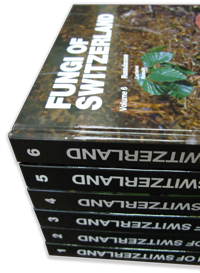“I strongly recommend that anyone with an interest in bird conservation in the region obtain a copy of this book for reference.”
 Status of Waterbirds in Asia: Results of the Asian Waterbird Census: 1987 – 2007
Status of Waterbirds in Asia: Results of the Asian Waterbird Census: 1987 – 2007
“In recent years, studies at tidal sites in Korea, Japan and Australia have revealed a significant decline in the numbers of shorebird species such as the Great Knot (Calidris tenuirostris) and the Far Eastern Curlew (Numenius madagascariensis), and these species were listed as globally threatened in 2010.
We have good reason to believe that populations of many other species have suffered a similar decline in Asia, where the decline of migratory species is far more severe than in Europe and the Americas. Not only is Asia the most populated continent, it is also one that has been undergoing decades of rampant economic development. Many important sites for wildlife conservation are gone or under serious threat from human disturbance, reclamation or pollution. There have been few inventories to show policy makers and the general public the location of priority sites for conservation, and even fewer studies to assess the population trend of birds.
The only important regional monitoring effort is the Asian Waterbird Census. It was started in 1987 and more than 6700 sites have been counted at least once. Not only has much valuable information been collected, but networks of conservationists have been established throughout the region. I strongly recommend that anyone with an interest in bird conservation in the region (which is, strictly speaking, not conventional ‘Asia’ but East and South Asia plus Australasia) obtain a copy of this book for reference. NGOs and government agencies should also be encouraged to conduct more detailed studies at sites where high numbers of waterbirds have been recorded and to ensure that these important sites are well protected and managed.
Nevertheless, we are still gaining experience in this region, there is still room for improvement in census methodology, and the results should also be interpreted with care. The distribution of the sites counted during the 20-year period is uneven: many sites have been visited and counted in countries with more ornithologists and birdwatchers, such as India, Australia, Japan and South Korea, but some countries that are important to waterbirds, such as China, Indonesia and Vietnam, are still rather poorly covered. An added disadvantage is that the Asian Waterbird Census depends on voluntary submission of data and very little has been done to achieve a consistent approach, so that the monitoring is far from ideal. Not all the important sites are counted every year, and the methodology is not necessarily the same between sites, or even for multiple visits to a single site, which makes it difficult to compare the results obtained in different years.
There is an indication in Table 3 of which sites surveyed met the Ramsar criteria as internationally important. However, it would be more useful if those visited more regularly were highlighted so we know monitoring data exist and trends can be interpreted. The inventory at times also confuses the same sites under different names or spellings: for example, Yamdrok Co and Yangcaoyong Co of Xizang (Tibet) are in fact the same site with different spellings.
A strong point of the book is that it presents a wealth of data on important sites. However, because of the rather poor coverage in East Asia and the inconsistent methodology, population trends of many species cannot be analysed precisely. Table 4 gives the maximum numbers of individuals of species counted in four 5-year periods (1987–92, 1993–97, 1998–2002 and 2003–2007). As the number of sites counted differed between years, this again has made any attempt to analyse trends difficult, except for a few highly gregarious species whose wintering sites are easily covered: for example, Black-faced Spoonbill (Platalea minor), Siberian Crane (Grus leucogeranus) and Hooded Crane (Grus monacha), of which over half of the wintering individuals are to be found at single sites and those sites are regularly counted.
To understand the trend of more widespread species, we must have a carefully planned monitoring programme. As the East Asian Australasian Flyway Partnership has been established in this region since 2006, I hope we can develop good monitoring programmes based on what has been done so far. In the face of the rapid decrease in numbers of many species in the region, this should be a challenge to be taken up without delay.”
Simba Chan,


 How many monographic series are there in the NHBS catalogue?
How many monographic series are there in the NHBS catalogue?










